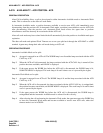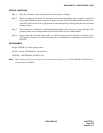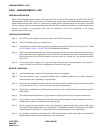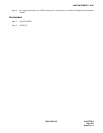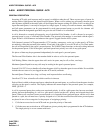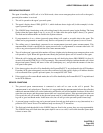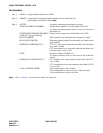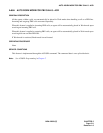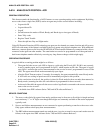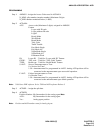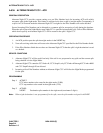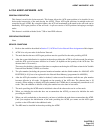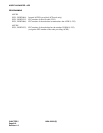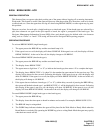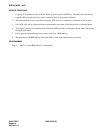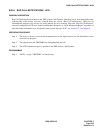
CHAPTER 5 NDA-24282 (E)
Page 212
Revision 1.0
ANALOG ACD POSITION - ACD
A-91A ANALOG ACD POSITION - ACD
GENERAL DESCRIPTION
This feature extends the functionality of ACD features to users operating analog station equipment. By dialing
access codes from a single-line (POTS) station an agent may invoke several features including:
• Logon with ID
• Logon without ID
• Logoff
• Switch between the modes of Work, Ready, and Break (up to nine types of Break)
• Enter Tally codes
• Register Trunk Trouble
• Place the split into Day and Night modes
Using Off-Premise Extension (OPX) technology an agent can be situated at a remote location and still process
ACD calls with many of the features available to the local agents using digital telephone sets. With additional
hardware, a remote agent can dial in to the NEAX2400 ACD and remain continuously connected while calls are
connected to the agent one after another. The same hardware can also be programmed to call the agent back at
their home telephone number effectively reversing any long distance charges which might apply.
OPERATING PROCEDURE
A typical shift at an analog position might be as follows:
• The agent dials the access code 4300 to logon to a split using the ID code 100. ID 100 is not currently
in use by another agent, and is programmed for Split 1 which requires an ID code. The agent is logged
on to Split 1 and hears the success announcement or the service set tone* programmed for access code
4300. The agent enters Work mode automatically upon logon.
• After the Work Timeout expires (3 seconds, for example), the agent automatically enters Ready mode.
If ACD calls are waiting in queue one will be immediately assigned to this position.
• At the conclusion of each call, the position is placed in Work mode for three seconds, then returned to
Ready mode (assuming the after call work timeout is programmed for three seconds).
• At the end of the shift, the agent calls the access code to logoff and is connected to the success announce-
ment or the service set tone*.
* Available since PBX software Series 7400 and ACD software Release 3.
SERVICE CONDITIONS
1. The access codes dialed by agents from analog positions may be from two to five digits in length and may
not contain any “*” or “#” digits even though these digits are commonly available on the station equipment
typically used.
2. Success and failure announcements are not connected to agents performing a transfer to the access code.
Only agents without a held party hear announcements.
3. The PBX without announcement trunk can send the tone, (service set tone for success and reorder tone for
failure) to the agent since PBX software Series 7400 and ACD software Release 3.



